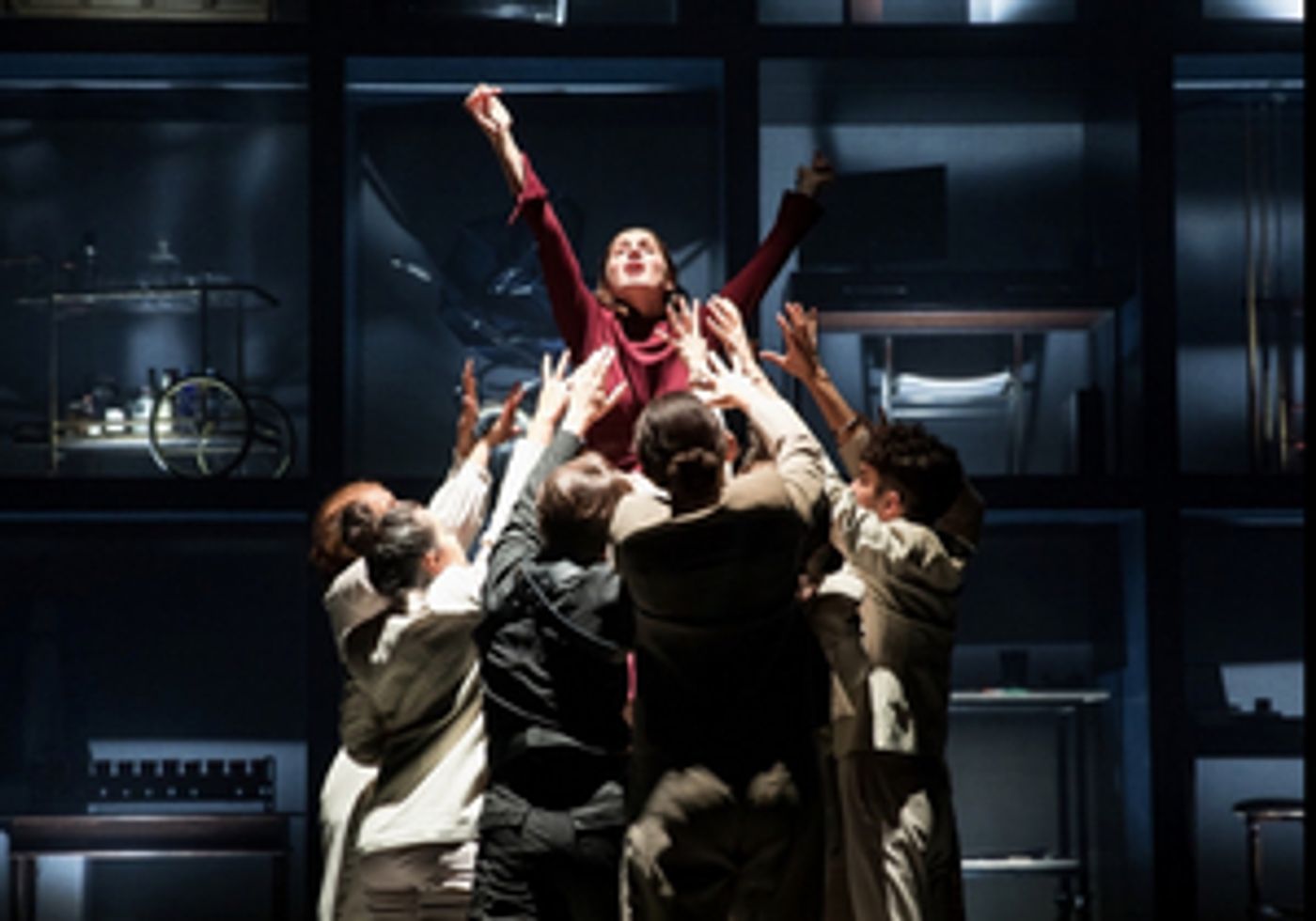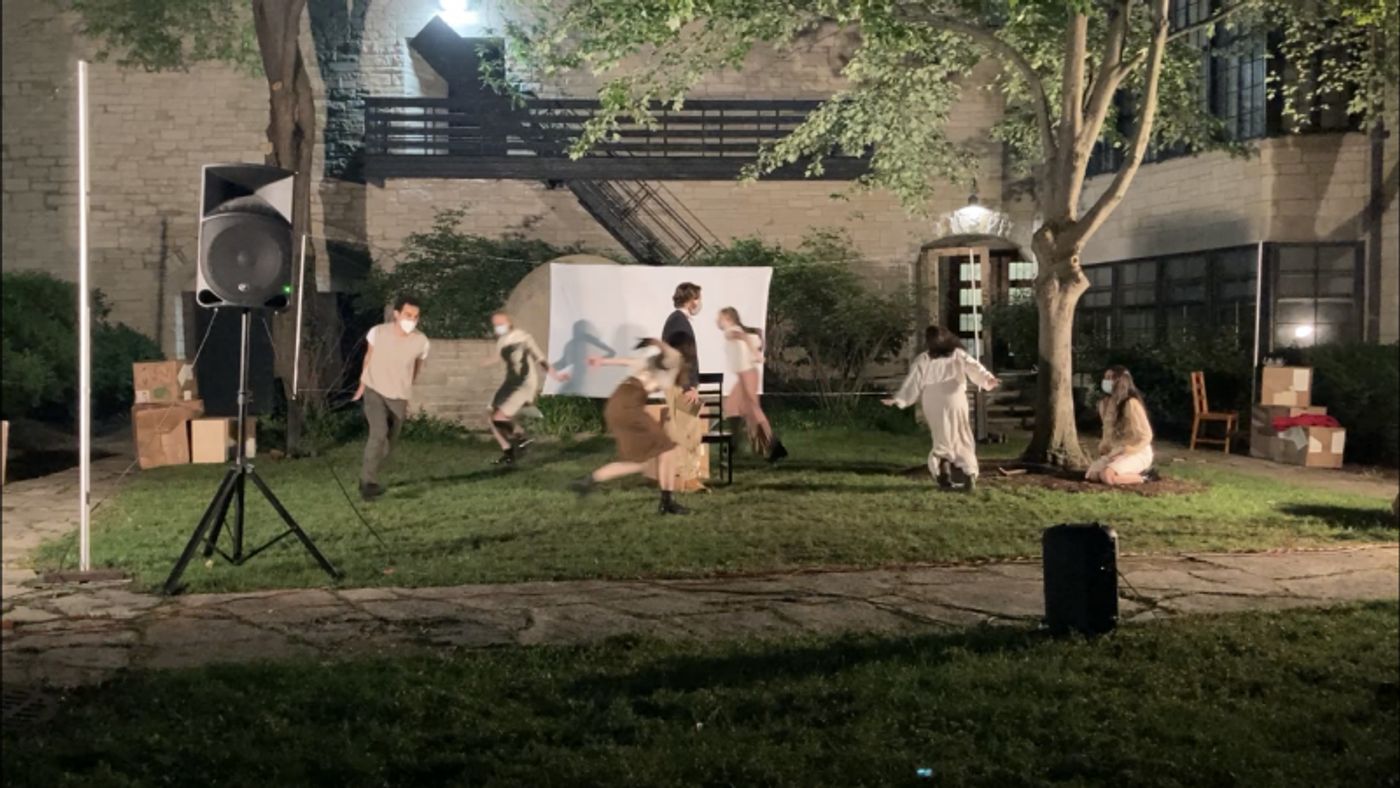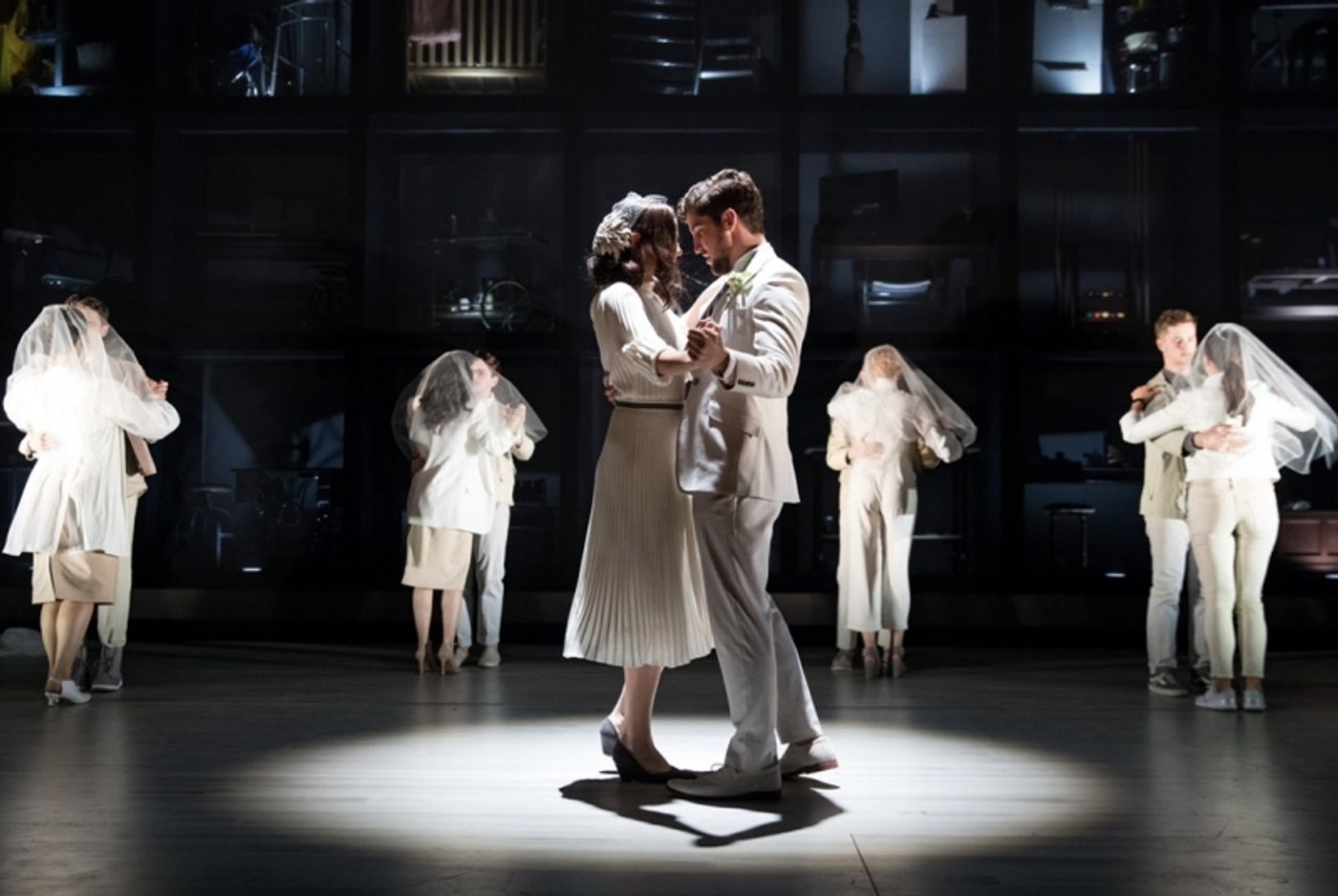Student Blog: Beyond Dance Breaks and Dream Ballets
Discovering the world of movement direction and unconventional choreography

When we think of choreography for the theatre, we tend to imagine big dance breaks in classic, often golden age musicals - moments like West Side Story's Dance at the Gym or Oklahoma's Dream Ballet. As a technically trained dancer in the musical theatre world, they were always my sweet spot, and I began my choreographic journey confident that those would be the kind of shows that I would choreograph. And yet one of my first major choreographic opportunities was on a production of Machinal - an expressionist, non-musical play that could not be further from those musicals I knew and loved. The professional director leading the production for Northwestern's mainstage envisioned movement-based transitions sequences between each scene, and I was brought on to create that movement. The process would serve as my introduction to the variety of ways movement can show up in theatre (and film) beyond my narrow preconception of music theatre choreography.
Much of this unconventional movement-creation work falls under the label "movement direction". A more broad label than "choreographer" (though the terms are often interchangeable), a movement director offers eyes and insight on any instance of movement onstage, even if the characters are not "dancing" per se. Even when it would make no sense for characters to break into timesteps, there may be key storytelling moments conveyed by movement outside of our everyday vocabulary, or occurring to music - and that is where a movement director comes in. Take, for example, Harry Potter and the Cursed Child - although not a musical, this play existing in a heightened world of magic requires moments of a heightened movement vocabulary so powerful and integral that they earned a Tony nomination for best choreography. Harry Potter's movement director was Stephen Hoggett, one of the absolute best in the industry when it comes to movement direction/non-traditional choreography/ "weird movement for plays" (as I like to call it). You probably know his work, even if you don't know his name: he's told incredible stories through movement both for musicals where kick lines would be deeply inappropriate (like Once and The Last Ship) and for plays where movement integrally heightened the storytelling (like The Curious Incident of the Dog in the Nighttime, Peter and the Starcatcher, and The Glass Menagerie). Movement direction is more common than you might think, showing up not only in your favorite plays and musicals but even in your favorite movies and TV shows - consider Jennifer White, who's created movement throughout the MCU, from Wanda Maximoff's superpowered magical hand gestures or the movement- and dance-filled flashback vision sequence in Avengers: Age of Ultron.

Despite my idea that classic, dance-heavy musicals would be my bread and butter as a choreographer, such nontraditional movement direction has become almost my specialty in choreographic work, and has shaped the way I think about even the "danciest" choreography I make or watch. The majority of the cast of Machinal were not trained dancers, and technical choreography would have felt inappropriate in the intense play, so movement had to zero in on storytelling and complex themes via largely simple, pedestrian movement. I had always been a storytelling-driven choreographer (especially driven by my work as an actor), but after having to take this simple storytelling creativity to such an extreme in Machinal, I found myself watching dance-heavy musicals and thinking "Why are they dancing? There's no reason for them to be." Movement direction has helped shape my philosophy as a choreographer: that heightened movement must come out of storytelling/emotional/character/circumstantial necessity - whether that necessary movement be full, technical dancing (which can have incredible value) or a simple rock. After Machinal, opportunity after opportunity for such work appeared. I created movement for plays, like Zelda at the Oasis (a straight play written to include several instances of dance) and The Secret in the Wings (a play with music telling an assortment of folktales through a variety of heightened theatrical devices, many extremely movement-driven). I created movement for Tomás and the Library Lady, a TYA musical that included more traditional musical numbers but also many simpler moments of movement (including work with puppets) that I created or helped shape. The closest thing to classic musical theatre dance breaks that I've made was for a horror film that included an old-Hollywood style musical/dance number.

(photo by Justin Barbin)
This variety of creative work has helped distill my focus as an extremely storytelling-driven movement-creator, and has also helped me fall deeper in love with collaboration. Although the work of a choreographer is always collaborative, there is also a degree to which in traditional "dance-y" musical theatre, dance breaks and dream ballets are more exclusively the choreographer's territory while everything else is more strictly under the domain of the director. However, in much of my work that has veered into the world of movement direction, the lines between the choreographer and director's territory have been much blurrier (in a positive way!). In Machinal, instances of choreography were nonexistent in the script we were drawing from, and stemmed wholly from conversations between myself and the director about what themes stood out to us in the surrounding scenes that we wanted to explore in each transitional movement sequence. In The Secret in the Wings, instances of unison chanting, singing, or transforming into magical creatures take actors out of traditional physical life on almost every page, and so almost the entire play was a game of tag-team between myself and the director: we were almost constantly in the room together asking each other's thoughts on each moment.
The last several years of my work as a choreographer have opened my eyes to the wide world of ways I can use my movement expertise to create theatre. From discovering the work of now-inspirations like Stephen Hogget whose credits range from new devised works to classic plays to folk-rock musicals, to exploring the same variety of work myself, I can't wait to keep exploring the fantastic array of theatremaking that can make up the career of a movement creator.

Videos


